Barnyard Millet Noodles, Organic (180 G)
₹132.26
39 in stock
Processing of Barnyard Millet Noodles Using Sprouted Barnyard Millet Flour
Ingredients Composition
- Sprouted Barnyard Millet Flour – 85%
- Tapioca Flour – 13%
- Cluster Beans Powder – 2% (for natural binding and elasticity)
- Cold-Pressed Coconut Oil – As required (for dough consistency and texture)
- Rock Salt Powder – As required
- Water – RO treated
Processing Steps
1. Selection & Cleaning of Barnyard Millet
- Sourced from organically grown barnyard millet (Kuthiraivali), known for its high fiber and iron content.
- The grains are cleaned to remove stones, sand, and broken seeds using RO-treated water and air-blowing techniques.
2. Sprouting Process
- Soaking: Grains are soaked for 8–10 hours in RO water to initiate enzymatic softening.
- Germination: Spread under clean, humid conditions (25–28°C) for 24–36 hours until tiny sprouts appear.
- Drying: Shade dried followed by low-temperature drying (<50°C) to retain antioxidants and micronutrients.
3. Milling & Blending
- Dried sprouted barnyard millet is stone-milled to a fine flour.
- Tapioca flour and cluster beans powder are added in an 85:13:2 ratio to enhance elasticity and prevent breakage during cooking.
4. Dough Preparation
- The flour blend is mixed with rock salt, cold-pressed coconut oil, and RO-treated water.
- Kneaded into a smooth dough and rested for 20–30 minutes to allow hydration and structure formation.
5. Extrusion & Noodle Formation
- Dough is passed through a low-heat extruder to form even strands of noodles.
- Noodles are cut to desired lengths (approx. 15–20 cm) and spread out to prevent clumping.
6. Steaming & Pre-Drying
- Steamed lightly for 3–4 minutes to set the structure and improve bite texture.
- Partially air-dried to reduce surface moisture.
7. Final Drying & Packaging
- Tray dried at 45–50°C until moisture <10% for shelf stability.
- Packed in biodegradable or vacuum-sealed pouches.
Shelf Life:
- 6–8 months when stored in a cool, dry place.
Nutritional Highlights of Sprouted Barnyard Millet Noodles
✅ Low Glycemic Index – Excellent for diabetic-friendly meals.
✅ High Fiber Content – Aids in digestion and keeps you full longer.
✅ Rich in Iron & Calcium – Supports hemoglobin formation and bone health.
✅ Sprouting Boosts Nutrient Bioavailability – Reduces antinutrients like phytic acid and improves mineral absorption.
✅ Naturally Gluten-Free & Light on Stomach – Suitable for celiac and gluten-sensitive individuals.
Wholesome Recipes Using Sprouted Barnyard Millet Noodles
1️⃣ Minty Barnyard Millet Lemon Noodles
🔹 Ingredients:
- Barnyard noodles
- Mint leaves paste
- Lemon juice, curry leaves
- Ginger, rock salt, coconut oil
🔹 Method:
1️⃣ Cook noodles and keep aside.
2️⃣ In oil, sauté ginger, curry leaves, and mint paste.
3️⃣ Add lemon juice and salt.
4️⃣ Mix noodles and serve warm with grated coconut.
2️⃣ Barnyard Millet Noodles Upma
🔹 Ingredients:
- Cooked barnyard millet noodles
- Onions, green chillies, mustard seeds, urad dal
- Grated carrot and coconut
- Turmeric and rock salt
🔹 Method:
1️⃣ Temper spices and dal in coconut oil.
2️⃣ Add onions, carrots and sauté.
3️⃣ Mix in turmeric, salt and noodles.
4️⃣ Garnish with grated coconut and coriander.
3️⃣ Barnyard Noodle Stir-fry with Curry Leaves & Capsicum
🔹 Ingredients:
- Barnyard noodles
- Sliced capsicum and curry leaves
- Roasted peanuts or sesame seeds
- Cold-pressed sesame oil
🔹 Method:
1️⃣ Stir-fry capsicum and curry leaves in sesame oil.
2️⃣ Add cooked noodles and toss well.
3️⃣ Sprinkle roasted peanuts or sesame seeds and serve hot.
Discover more from Goodness Farm
Subscribe to get the latest posts sent to your email.
| Weight | 0.180 kg |
|---|

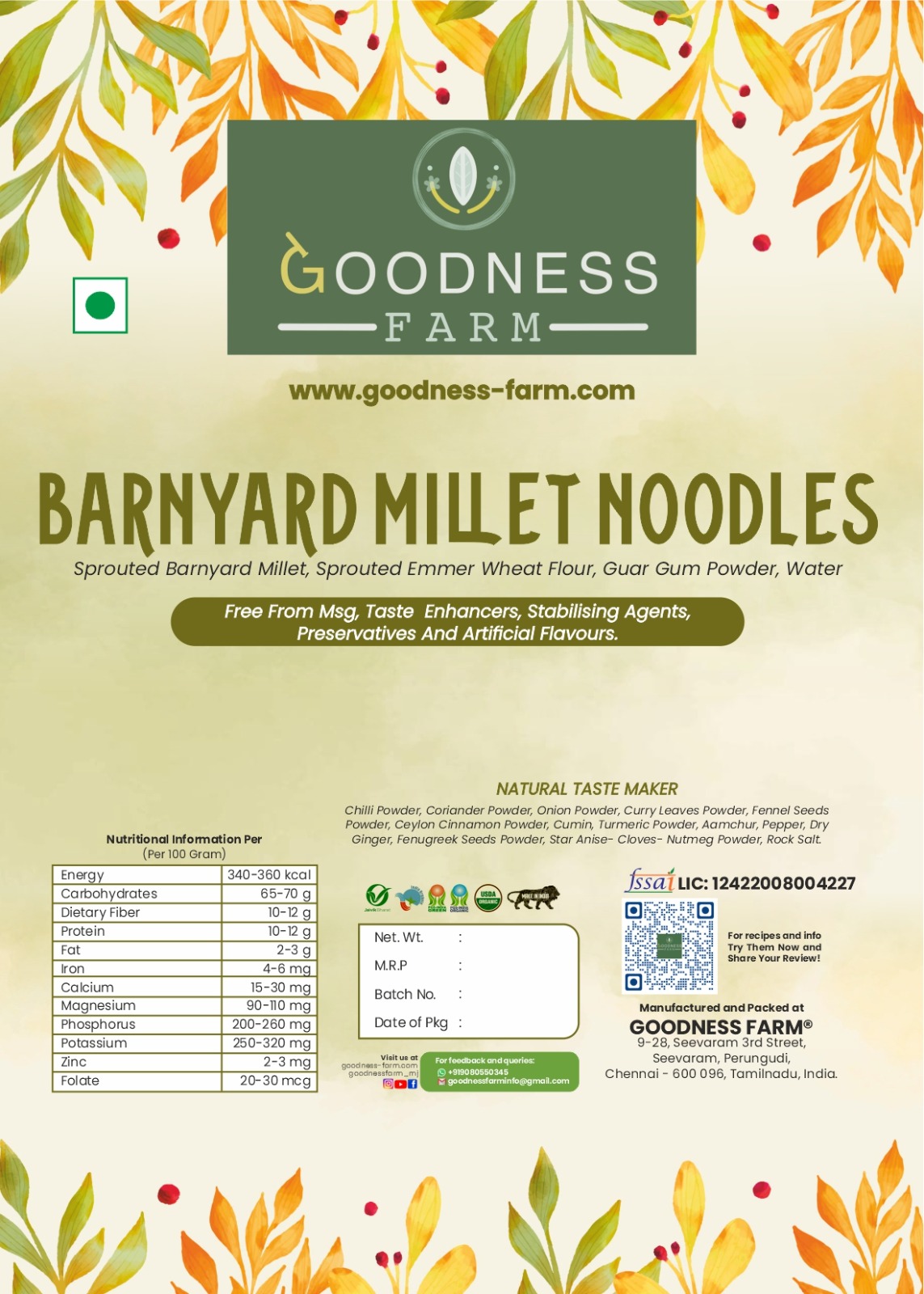




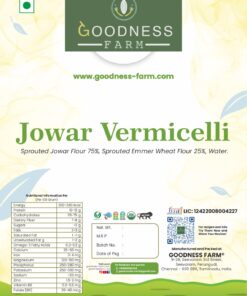

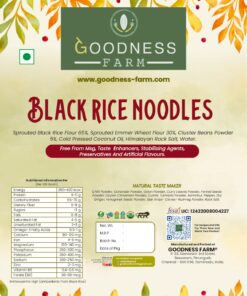
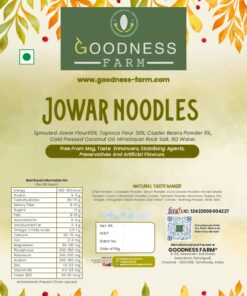
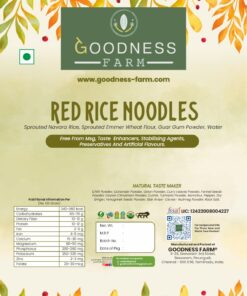
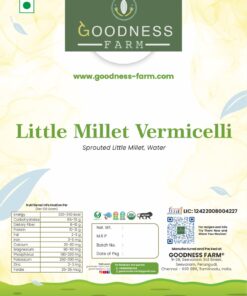
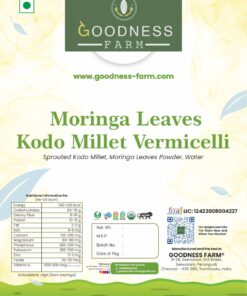
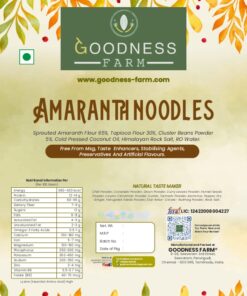

Reviews
There are no reviews yet.